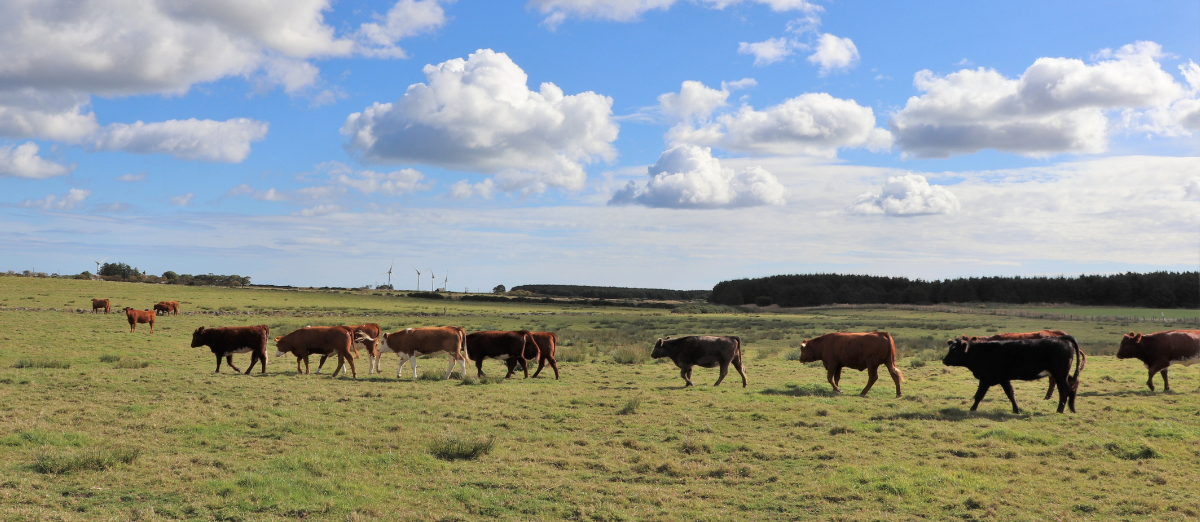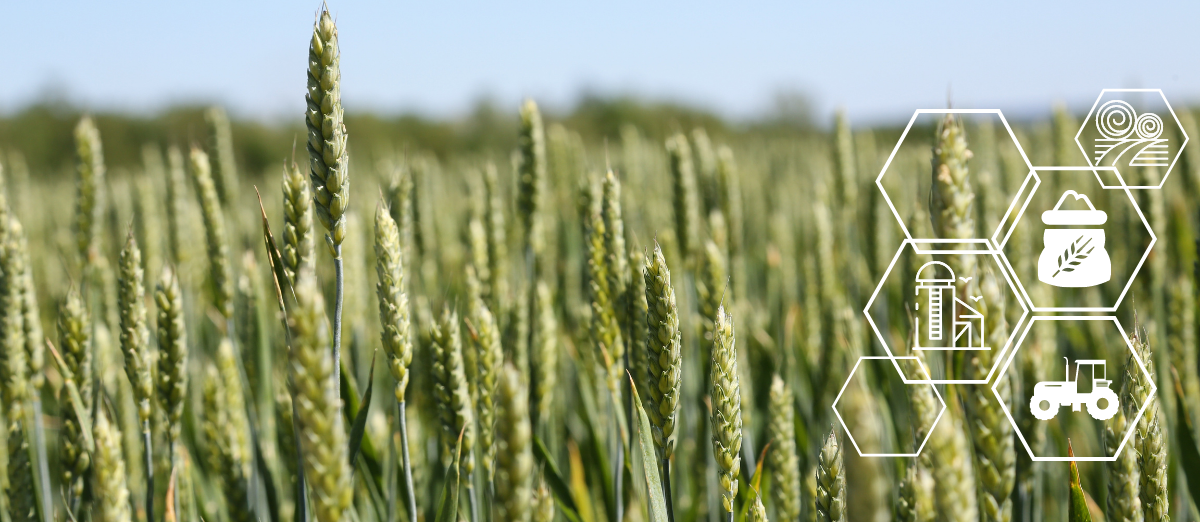Price Risk Management Tools for Cattle Producers
Author(s): Kenny Burdine
Published: January 28th, 2022
Shareable PDF
The last few years are unlikely to be remembered fondly by many cattle producers. Large cattle supplies, a global pandemic, weather challenges, and a sharp increase in feed prices have all impacted feeder cattle values. However, 2022 has brought optimism for a significantly better cattle market. As I write this on January 21, 2022, there is more than a $15 per cwt increase in CME© feeder cattle futures from the March contract to the August contract. In fact, every contract for August through November is trading north of $180 per cwt. It has been some time since we have seen those types of price levels so they have certainly caught my attention over the past few weeks. This article will briefly discuss some tools available to cattle producers should they want to protect themselves from downside price in 2022.
First, producers could consider entering a cash forward contract with a buyer looking to place feeders later in the year. The two parties could agree on a price now for cattle to be delivered at a later date and this expectation of higher prices should be reflected in the contract price. Assuming the contract is binding and enforceable, this strategy eliminates price risk. However, production risk remains a concern if cattle don’t perform as expected, fail to reach the agreed upon weight, or if weather conditions necessitate earlier sale of the cattle. While forward contracts are an excellent price risk management tool, they are pretty limited in their use for cattle in Kentucky.
Hedging, through the sale of deferred futures contracts, is another way to capitalize on a strong futures market. As an example, a producer who plans to sell cattle in August may choose to sell an August CME© Feeder Cattle futures contract now in order to have downside price protection until they sell the cattle. If feeder cattle markets decline between now and August, the producer will gain on their short futures position, which will offset some of the loss in value of the cattle they will sell. Producers who choose to implement this strategy need to be certain they have access to considerable capital for margin calls. If futures prices continue to increase, producers can lose a lot of money on short futures positions before they are able to sell their cattle on the stronger market. For this reason, it is crucial that lenders be fully aware of the plans if this strategy is used. Producers must also consider basis as the value of the cattle they sell will not perfectly match futures prices.
Options on futures contracts provide an opportunity to have some downside protection, but also keep the ability to capitalize on rising prices. For example, if the August CME© feeder cattle futures contract were trading at $180 per cwt, the producer might buy a put option with a strike price of $174. The put option gives the producer the right to sell August futures at $174, which means their option will increase in value as the market falls. They will pay a premium for this right, which becomes an additional cost. They must also self-insure the first $6 per cwt drop in the market (the difference between the futures price and the strike price on the put). If feeder cattle prices continue to rise, the producer can benefit by selling their cattle on the stronger market and the only expense is what was paid in premium. Much like hedging through the sale of a futures contract, basis must also be considered with an option strategy as the strike price is based on the futures market.
An additional limitation of both futures-based strategies (sale of futures and purchasing of options) is the 50,000 lb CME© Feeder Cattle contract size. The vast majority of Kentucky cattle producers are not large enough to utilize futures and options. Fortunately, Livestock Risk Protection (LRP) insurance provides an opportunity to purchase an insurance product very much like a put option, but that can be scaled for smaller operations. Additionally, the subsidy on LRP has been increased substantially over the last couple of years, which makes it much more attractive from a premium perspective.
LRP is an insurance product that pays an indemnity if the CME© Feeder Cattle Index is below a selected coverage level on the ending date of the insurance policy. The CME© Feeder Cattle Index is used to cash settle open CME© Feeder Cattle contracts at expiration, so this insurance product is very similar to a put option. Consider the option example from before for a producer that planned to sell 800 lb feeder steers in August. Rather than purchasing an August put, that producer could instead purchase LRP insurance with a coverage level of $174 per cwt and an ending date sometime during the month of August. If the CME© Feeder Cattle Index was below $174 on the ending date of the policy, they would be indemnified for the difference on every lb they covered. They must still self-insure the decrease until the index reaches $174 and they must also understand basis – the policy is indemnified based on the CME© Feeder Cattle Index, rather than what they sell their cattle for.
The table below provides a quick comparison of some of the key features of the strategies discussed. Forward contracts are the only strategy described that do not involve basis risk, as an actual price for the cattle can be agreed upon. Potential margin calls are an important consideration for producers that choose to use short futures positions. Put options and LRP insurance both have the advantage of leaving potential for upside price gains, although the downside protection is not as solid as with forward contracts or short futures. Finally, LRP insurance offers the best opportunity to scale price protection to smaller quantities. While forward contracts could be written in any size, they tend to be more available for larger volumes.
Risk management strategies are very much dependent on the risk preferences and financial situation of the individual. The purpose of this article was largely to point out what is being offered by the market and review some price risk management strategies that are available. While these markets certainly have the potential to go higher, it is very likely that attractive pricing opportunities will be available for producers looking to establish some downside price risk protection this year. Price risk management is not about trying to cherry-pick market highs as it is sometimes presented. It is about strategically managing downside price risk and should be part of every producer’s marketing plan.
Table 1: Quick Comparison of Feeder Cattle Price Risk Management Tools

Recommended Citation Format:
Burdine, K. "Price Risk Management Tools for Cattle Producers." Economic and Policy Update (22):1, Department of Agricultural Economics, University of Kentucky, January 28th, 2022.
Author(s) Contact Information:
Kenny Burdine | Associate Extension Professor | kburdine@uky.edu
Recent Extension Articles
Inflation - "Good" or "Bad" for Agricultural Producers and Consumers?
January 28th, 2022
Inflation has been headline news for several months and certainly an issue impacting all businesses, industries, and all of us as consumers. Last year the monthly inflation rate averaged just under 5% and in its latest report (January 12, 2022) the BLS indicated that prices over the past 12 months increased 7% -- the largest December to December percent change since 1981.
Update on Agriculture Exemption Number for Sales Tax Exemption on Farm Purchases
January 28th, 2022
The application deadline for farms with existing Exemption Certificates on file with farm suppliers was January 1, 2022. Applications are still being accepted for existing farms. Farms that do not have existing Exemption Certificates should also apply as soon as possible in order to qualify for the sales tax exemption.




